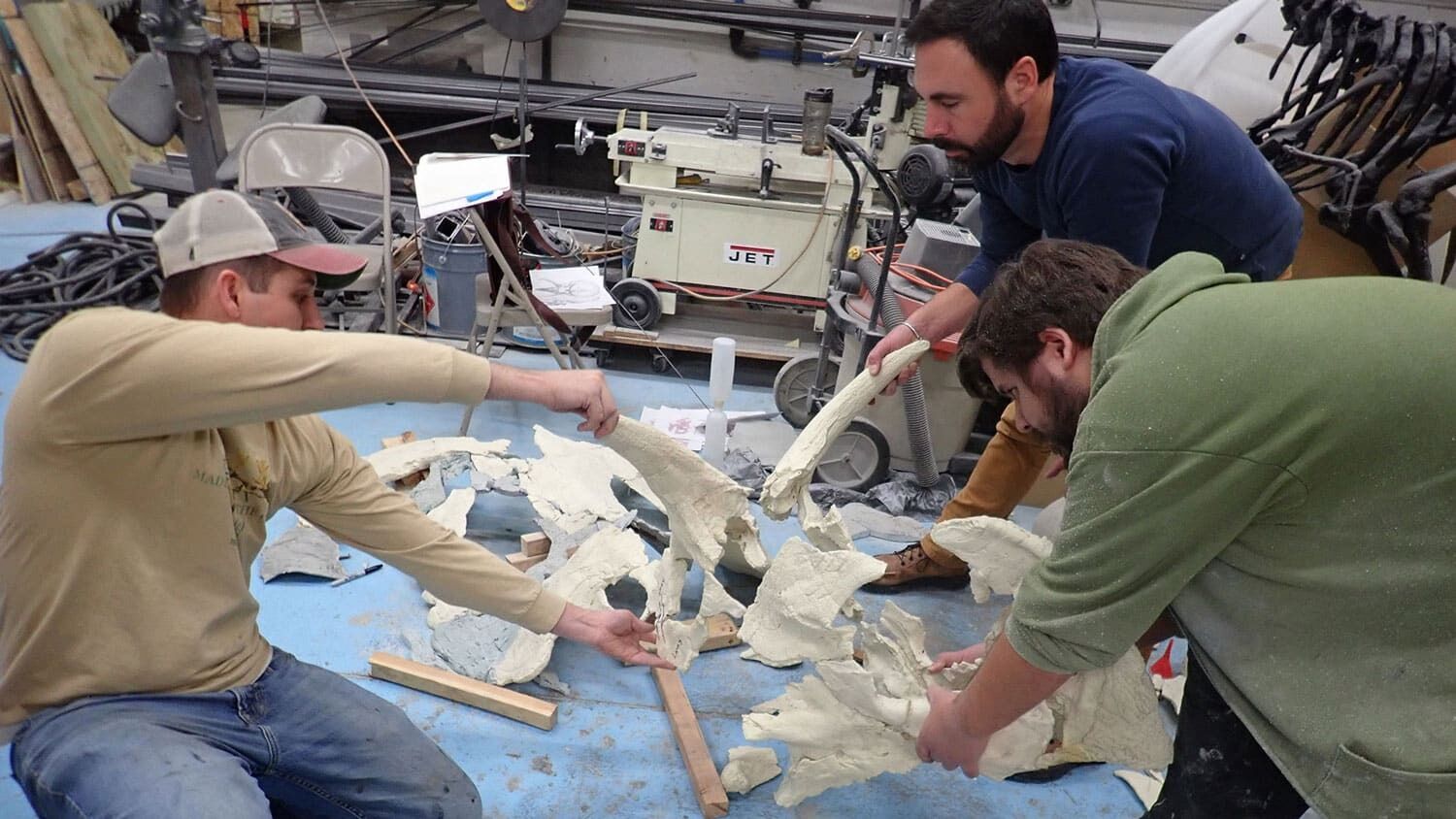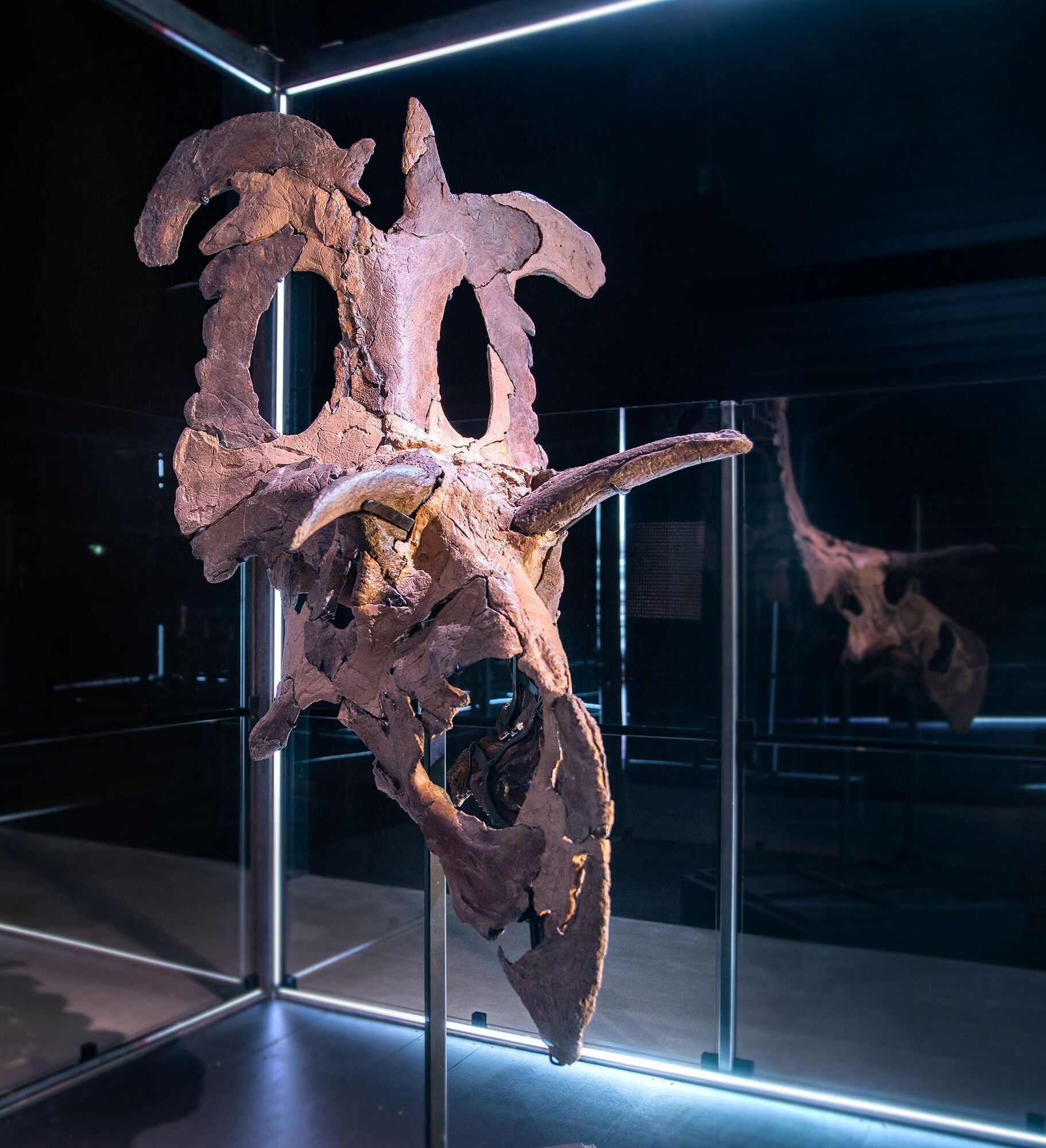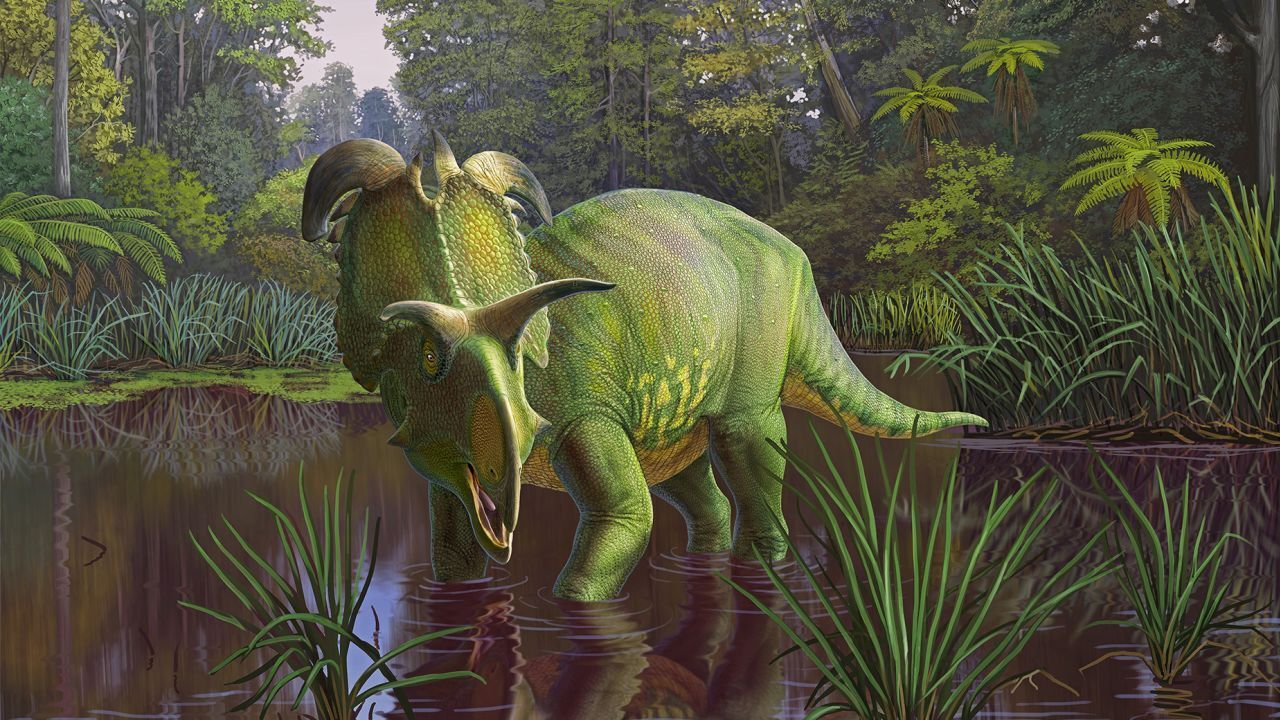News
A new species of dinosaur with large blade-like horns has been found in Montana. Photo
The fossils of the new specimen, named Lokiceratops rangiformis, were found in a barren area of Montana. The dinosaur lived about 78 million years ago when the now-arid region was a swampy floodplain bordering a vast sea route in western North America.
The name means "Loki's horned face, like a caribou". The most noticeable feature of the dinosaur is its two large, blade-like horns that protrude forward and protrude between the eyes, Science News writes.
The new species, Lokiceratops, was named by one of the study's lead authors, Joseph Sertich and Perry Levene, because of its unusual, curved blade-like horns on the back of its frill, a bone shield on the back of its skull, and its asymmetrical horns on top of its frill, which resemble those of a caribou, Tech Explorist writes.
Scientists contributed to the reconstruction of the dinosaur using small pieces. After assembling the head, they discovered that the specimen belonged to a previously unknown species of dinosaur.
These two antlers, like those of modern caribou or reindeer, are of different lengths. The arrangement of the horns, as well as the ornaments along the edge of the creature's bony neck frill at the back of the head, differ from other species of horned dinosaurs that scientists say existed in the same region and at about the same time.
"It's becoming increasingly clear that horned dinosaurs used bone features as ornaments to attract mates or intimidate rivals of the same species," says Lieven of the University of Utah in Salt Lake City. According to him, this differentiation in ostentatious ornaments is something that evolved on the island, like the bright, expressive plumage of birds.
The new study suggests that this diversity may be due to the relative isolation of this ancient marsh, cut off from other parts of the mainland by a sea route. Lociceratops, according to Löwen, would be the fifth species of large horned dinosaur to be found in Kennedy Canyon, a dry gorge with exposed rock containing fossils that spans the area of present-day northern Montana and southern Alberta in Canada. Other identified species of ceratopsids include the close relatives Medusaceratops, Wendiceratops, and Albertaceratops, as well as a smaller ceratopsid species called Avaceratops lammersii.
"This is the highest diversity of ceratopsians known anywhere," commented Löwen.
However, other researchers are not convinced that Lokiceratops represents a new species. "It's possible that the differences in bone ornaments between Lokiceratops, Albertaceratops, and Medusaceratops do not represent separate species, but rather the evolution of ornaments within a single species," said paleontologist Denver Fowler.
According to Fowler, from the Dickinson Museum Center in North Dakota, these differences can only mean age-related changes in the same species.
According to him, previous studies of other ceratopsids, including the well-known triceratops, have shown that these animals can change significantly as they grow. He also notes that Lokiceratops' vine-like brow horns are hollowed out, a feature seen in the largest and oldest Triceratops specimens compared to the more solid horns of younger specimens.
"Lokiceratops does seem to be very close to Albertaceratops and Medusaceratops, based on the arrangement of bone ornaments on the frills of the dinosaurs. But the way the horns are positioned suggests they may be different species," says Sean DeNary, a paleontologist specializing in ceratopsids at George Washington University in Washington, D.C., who was not involved in the new study.
This is not the first time that researchers have debated whether two closely related ceratopsid specimens represent two separate species, or whether one is simply a juvenile version of the other. Similar debates have erupted over the identity of Triceratops and Torosaurus. Some scientists also consider Albertaceratops and Medusaceratops to be the same species.
"When we have opposing views, we have to highlight them. If we get more data, we will get closer to the truth," the scientists add.
Only verified information is available on the OBOZ.UA Telegram channel and Viber. Do not fall for fakes!






























